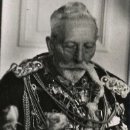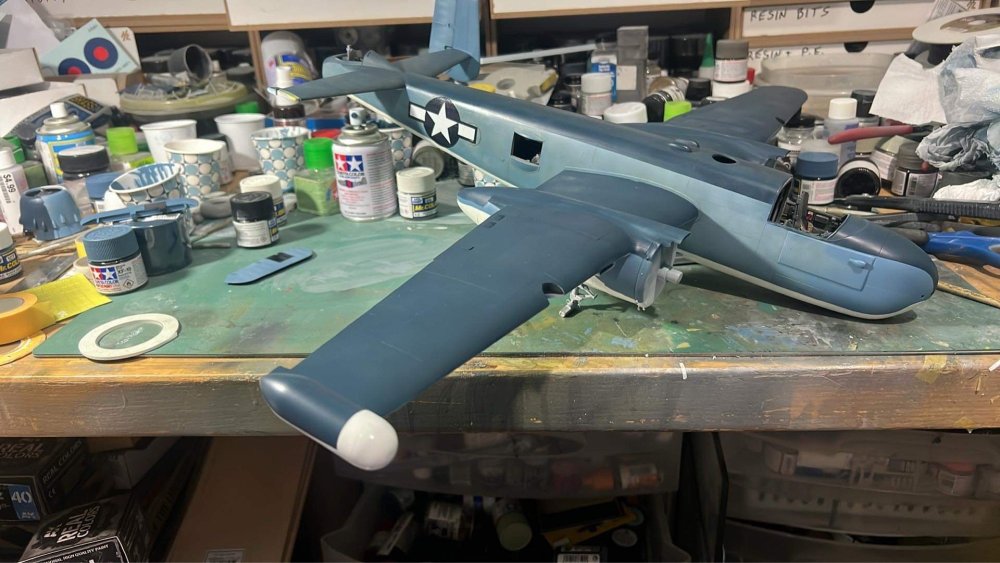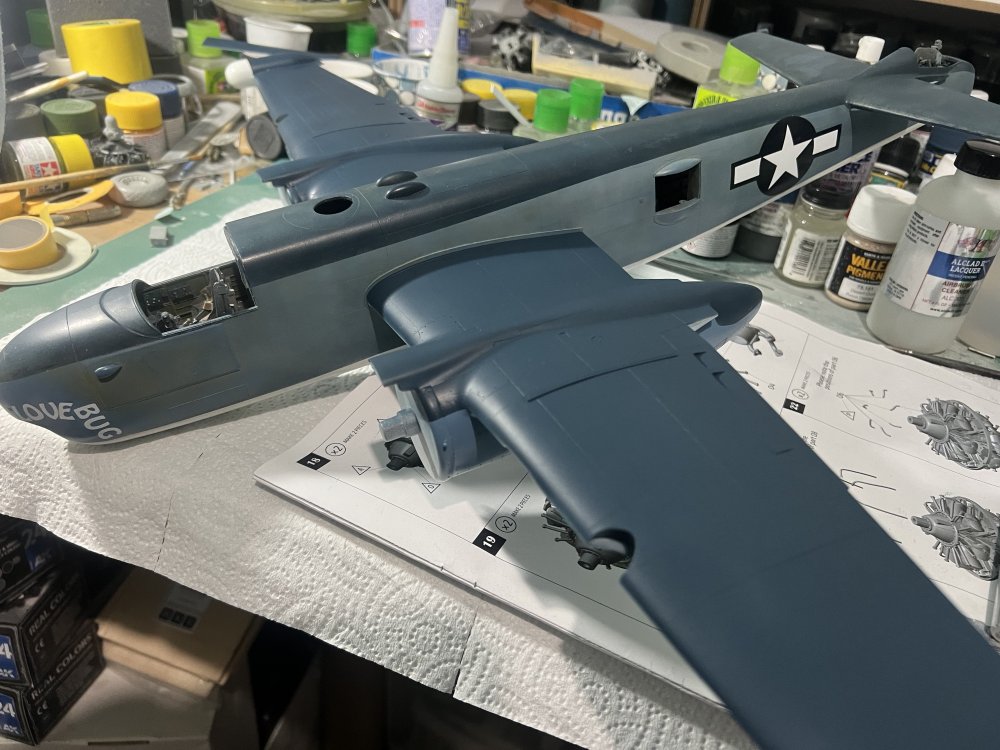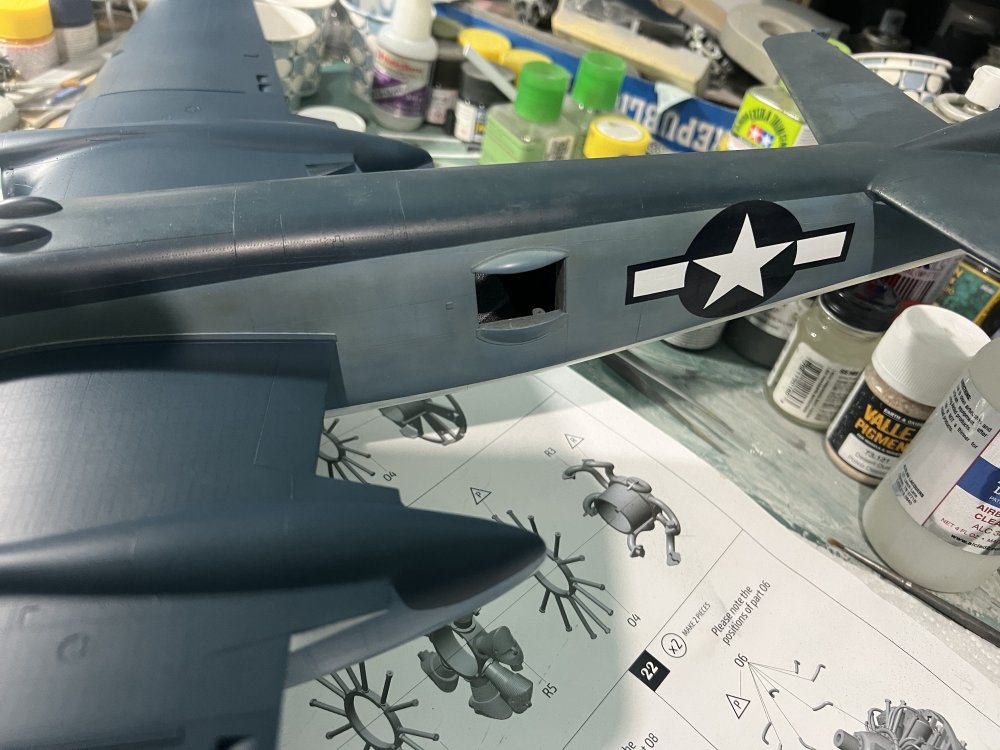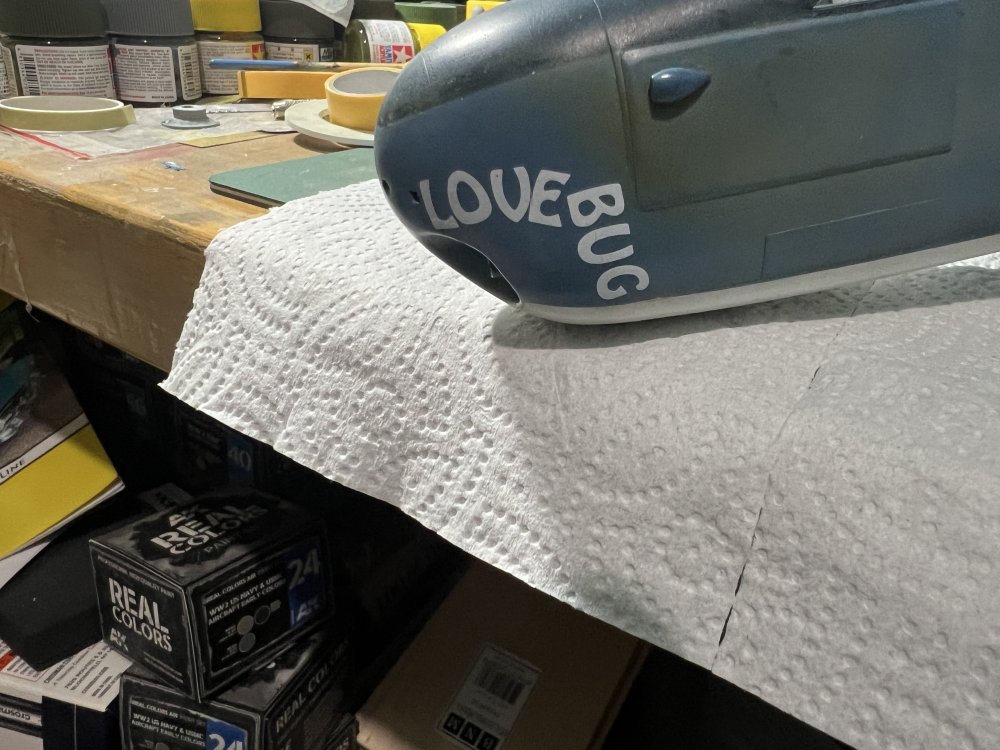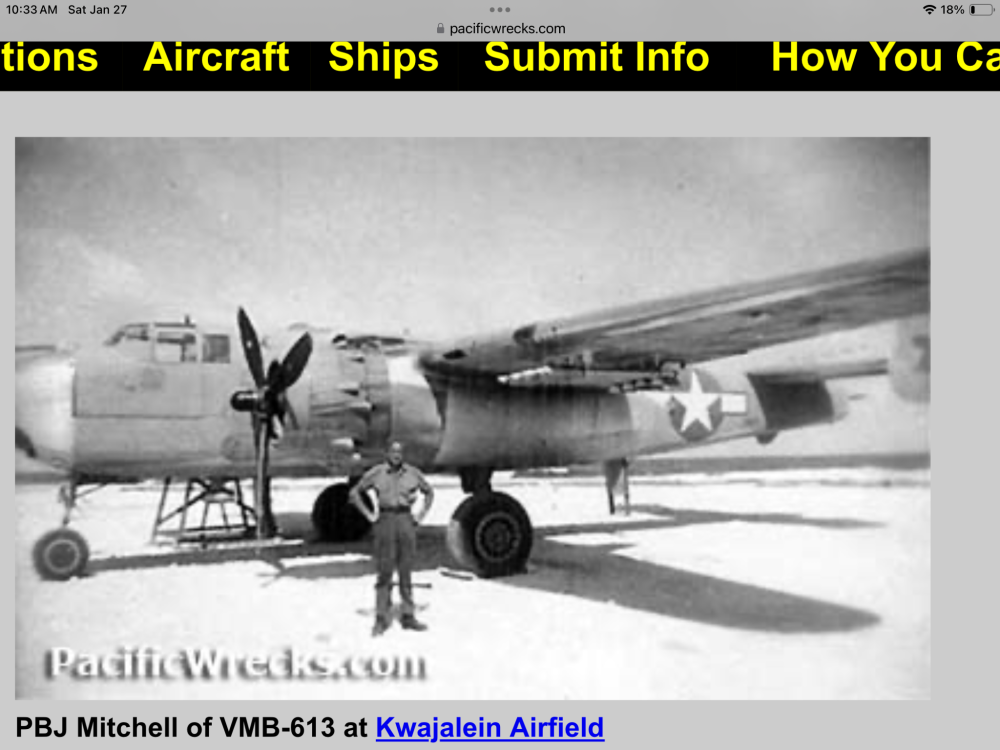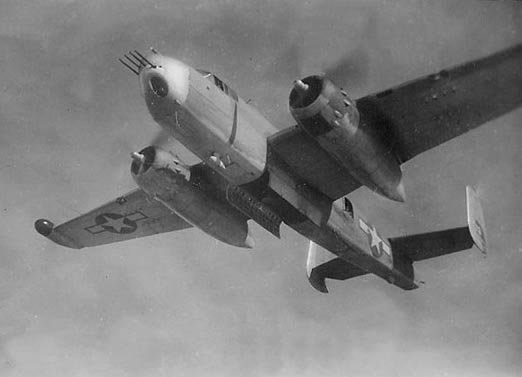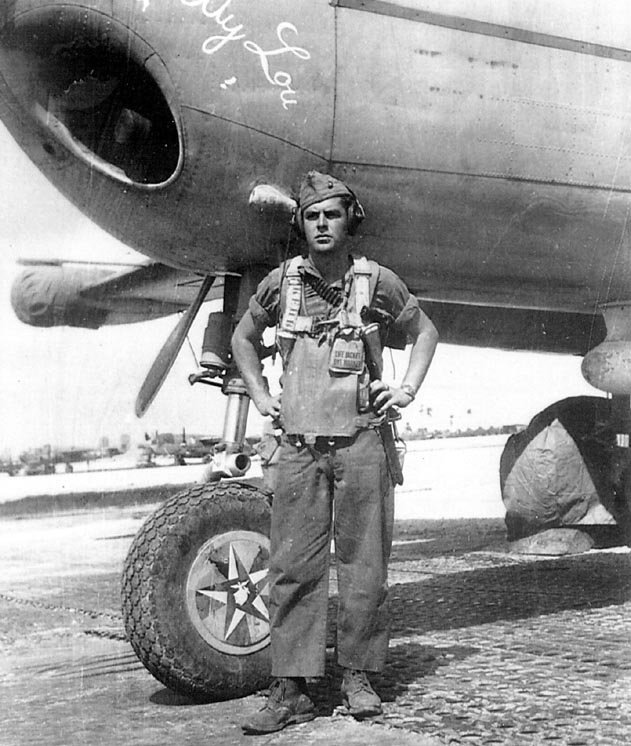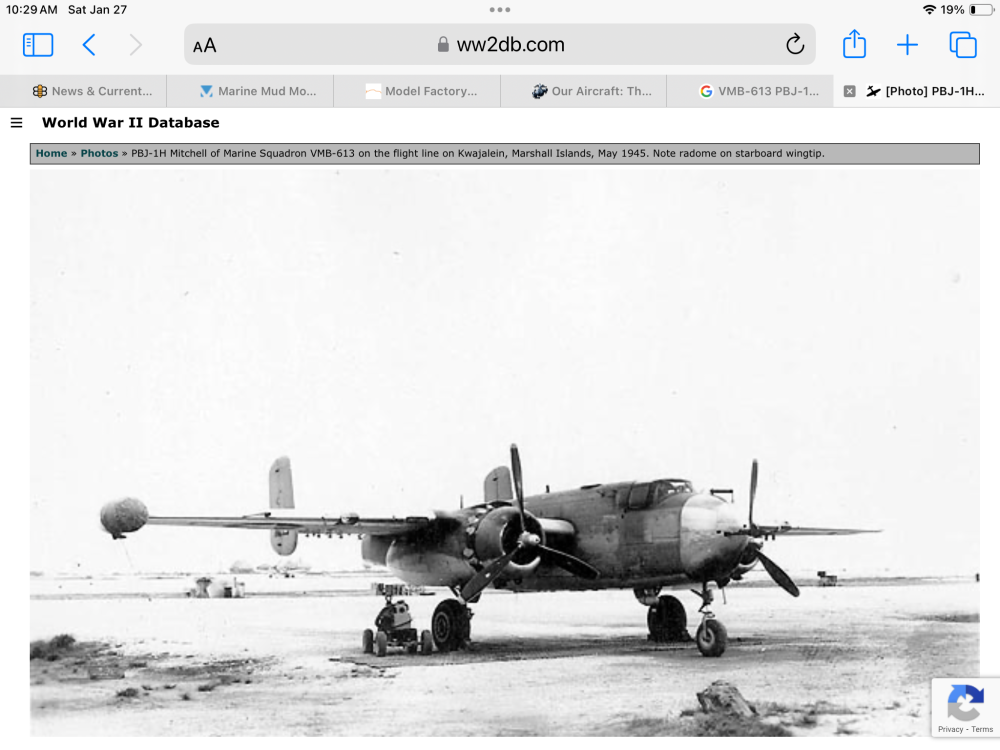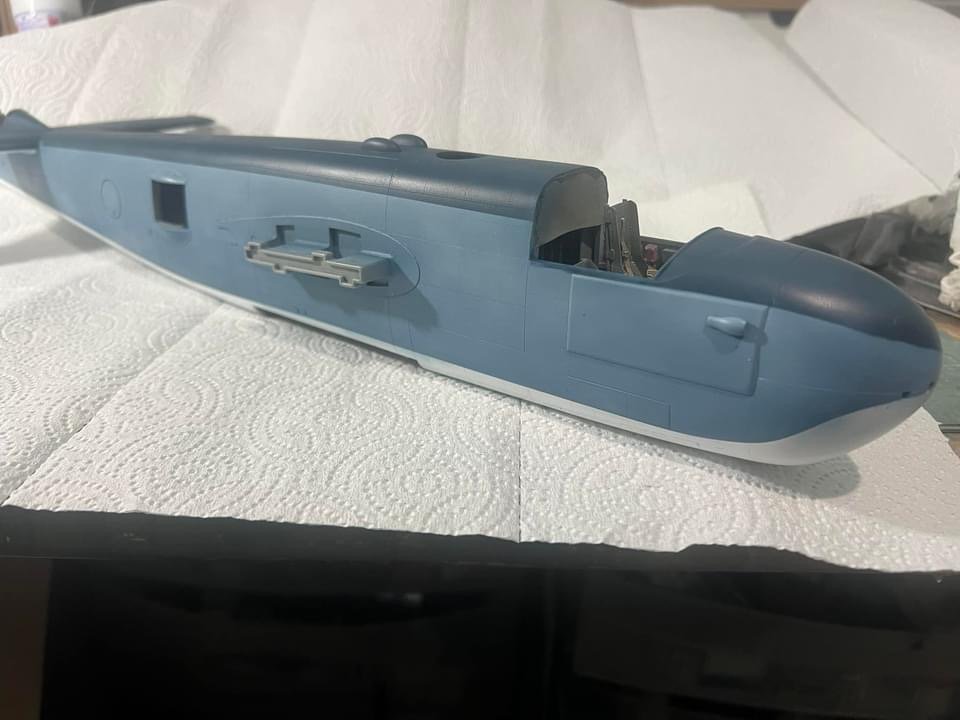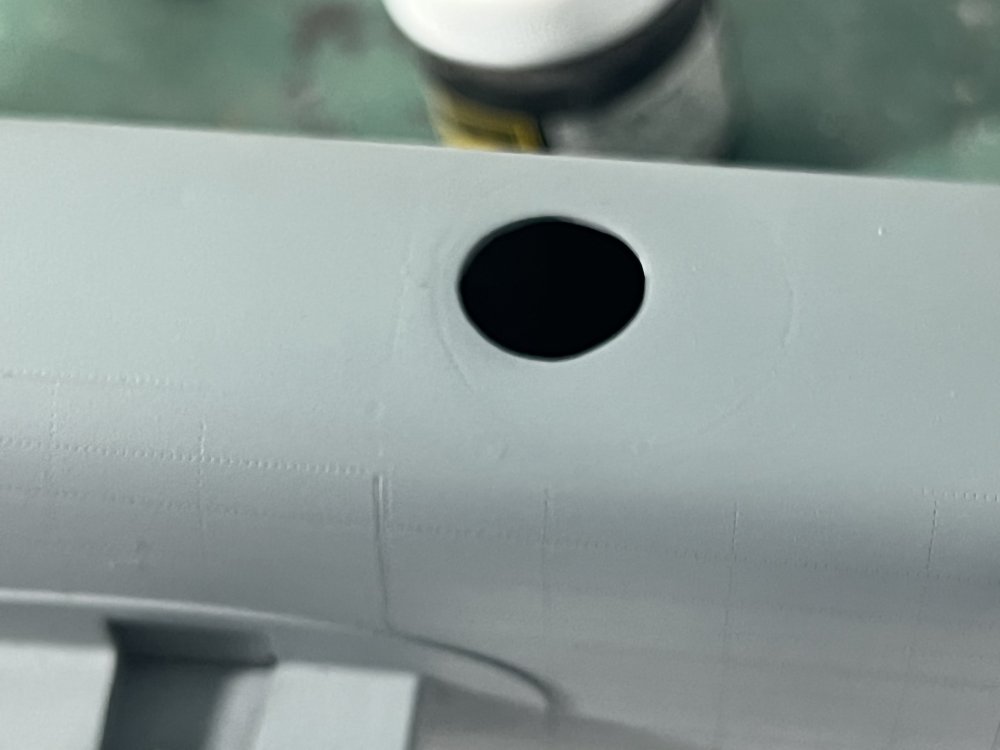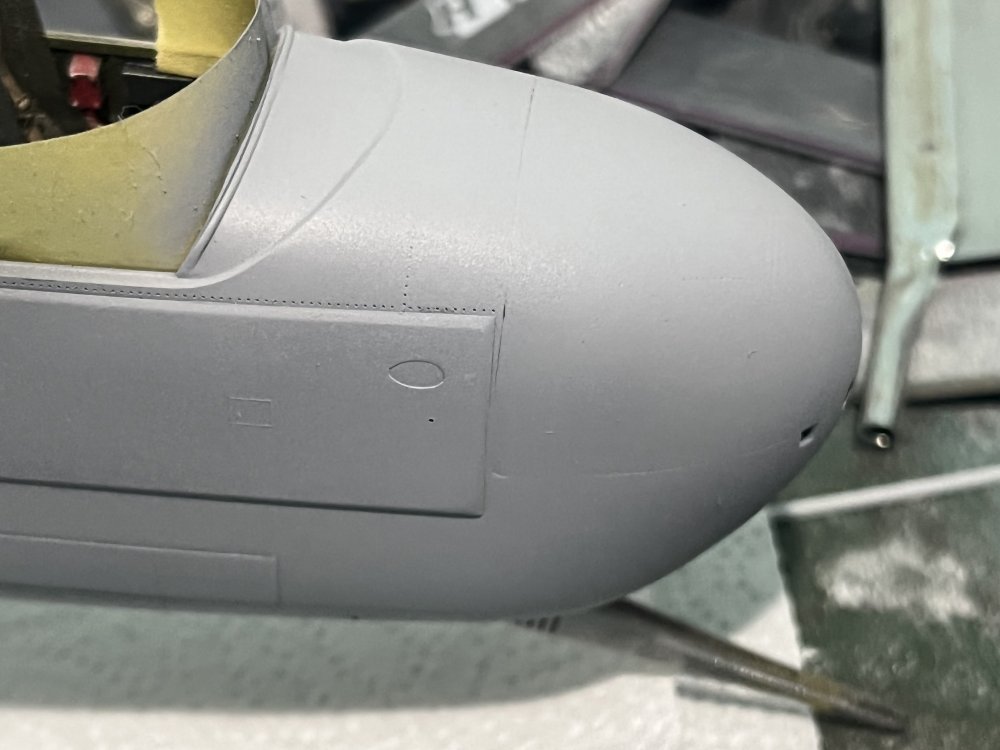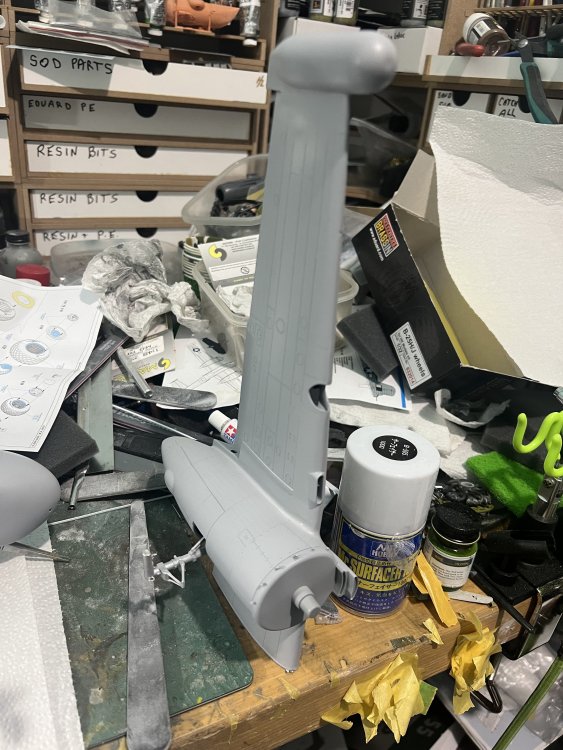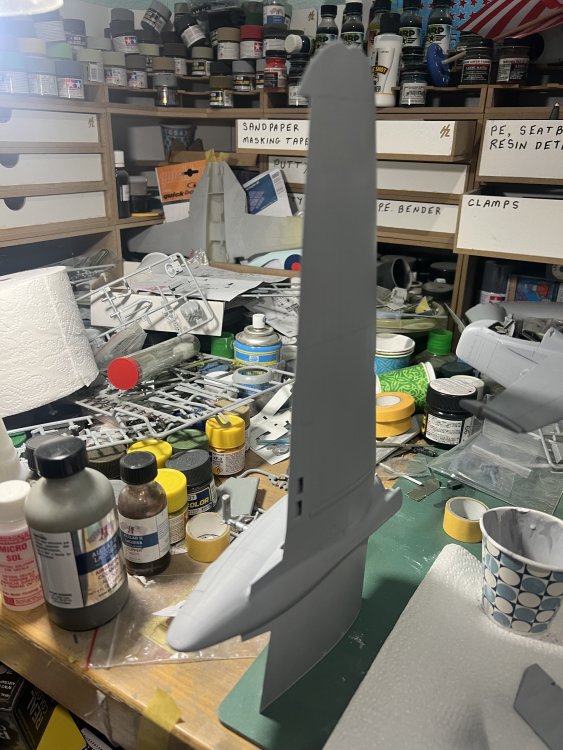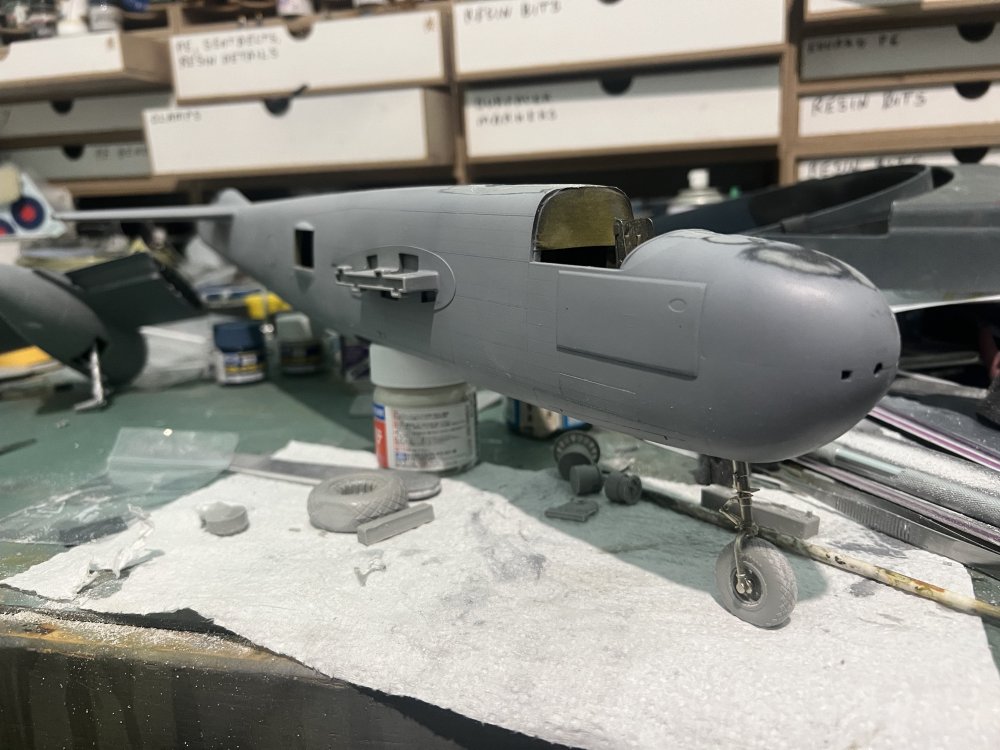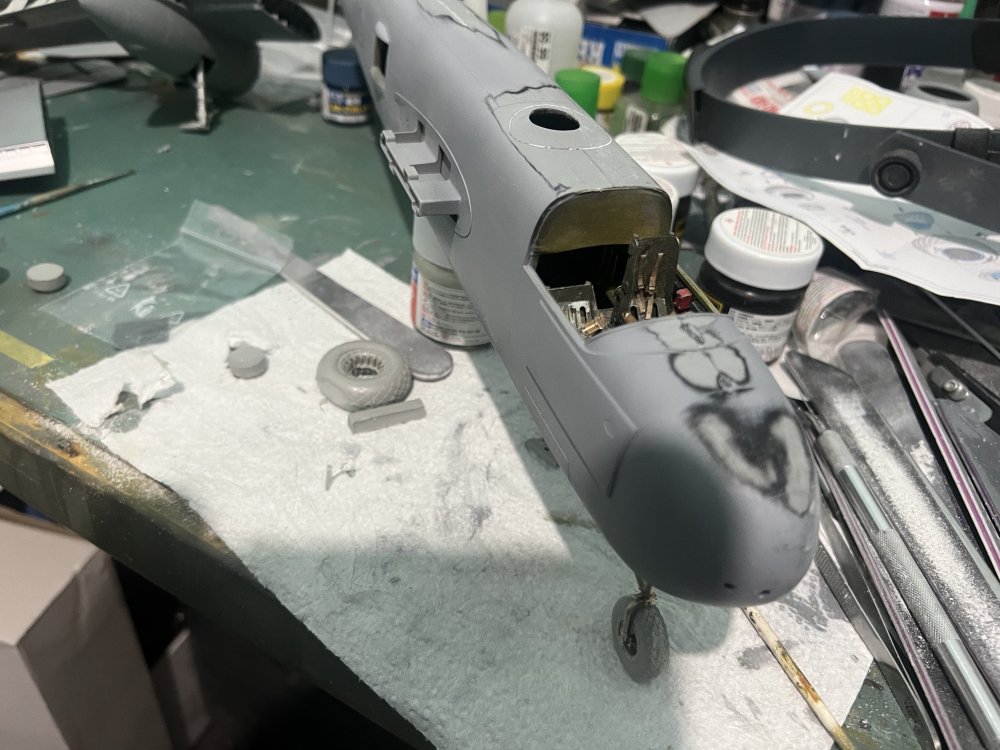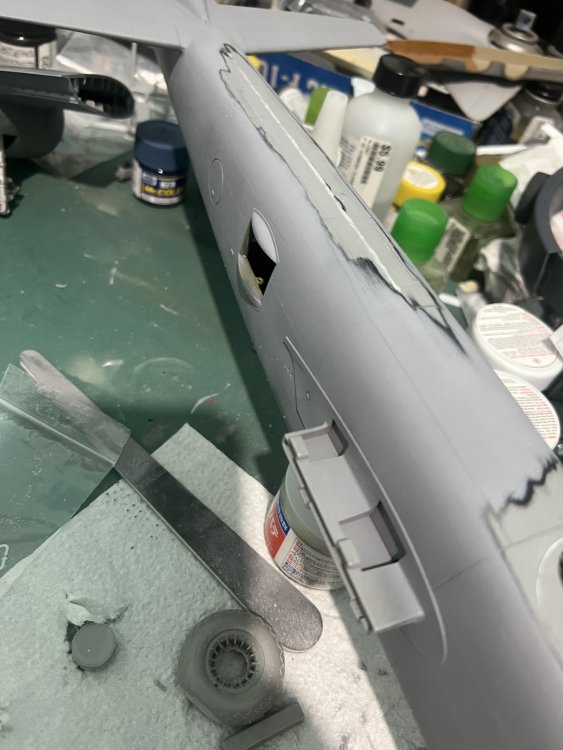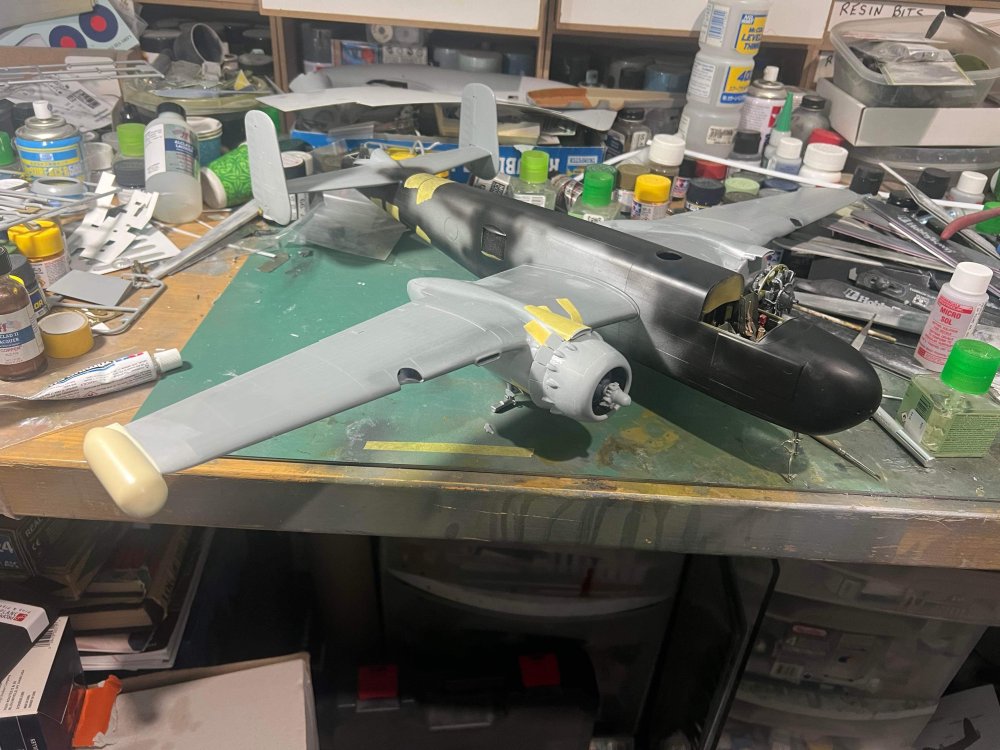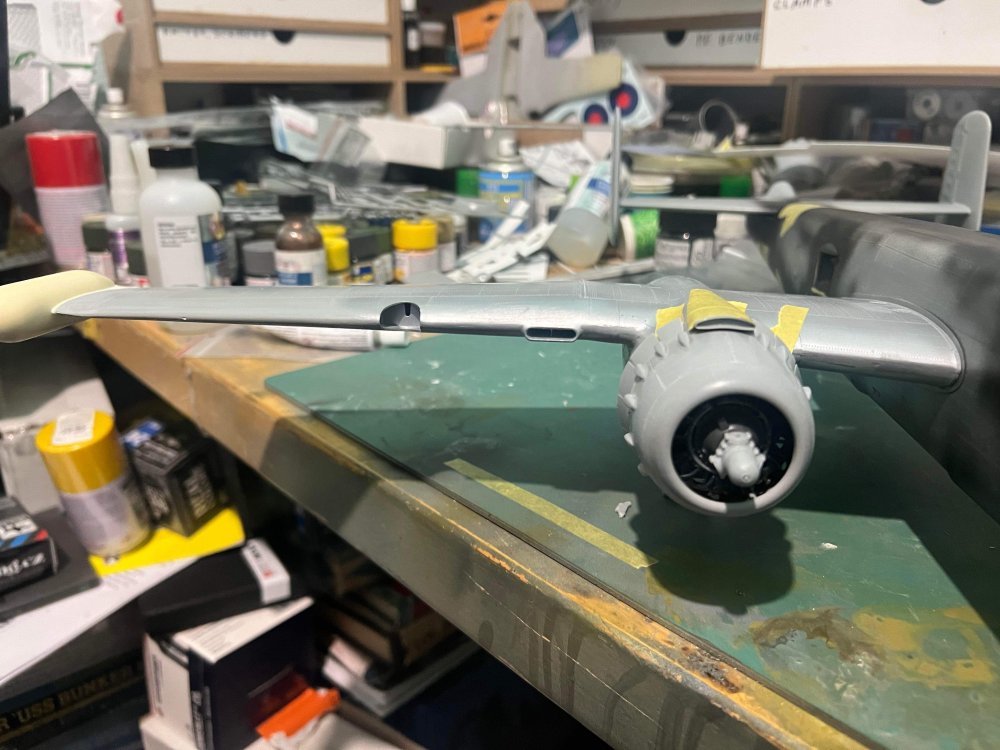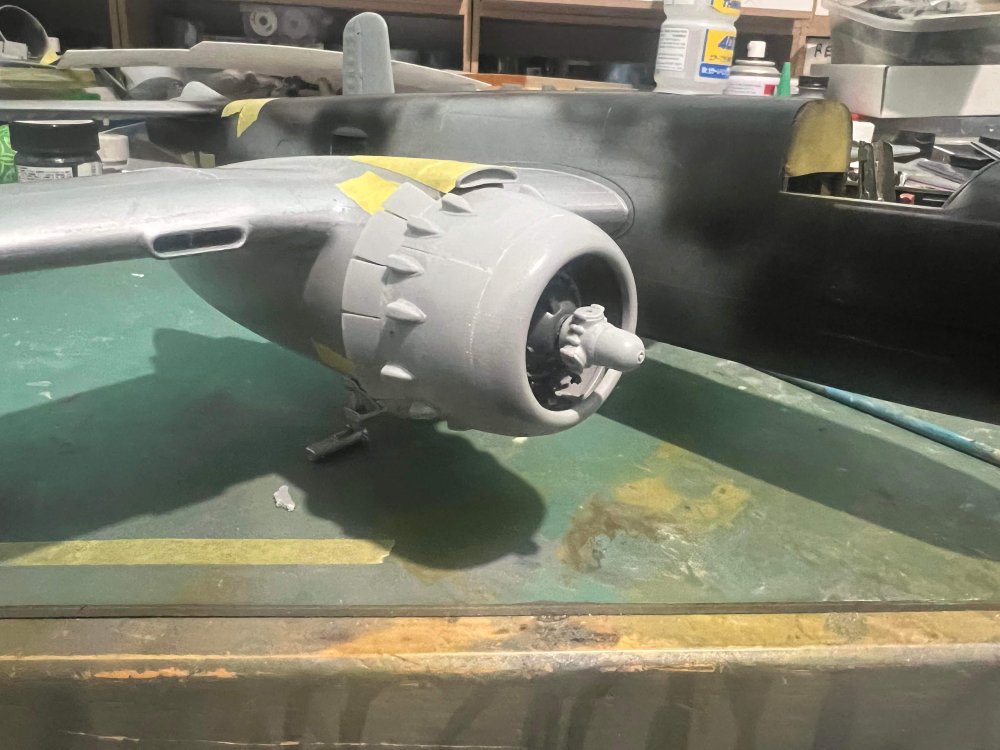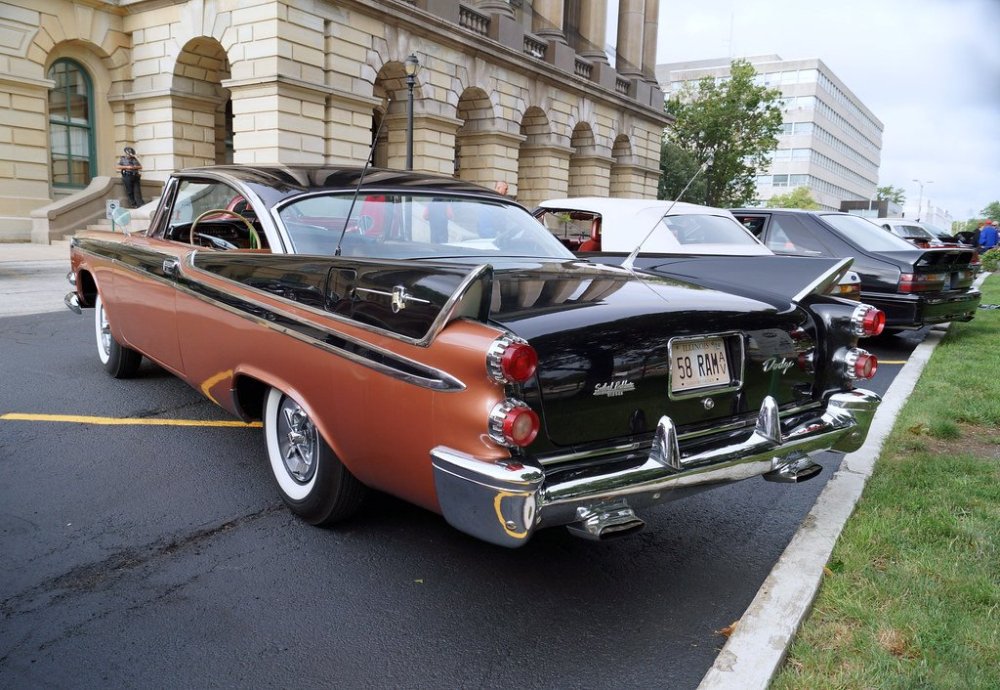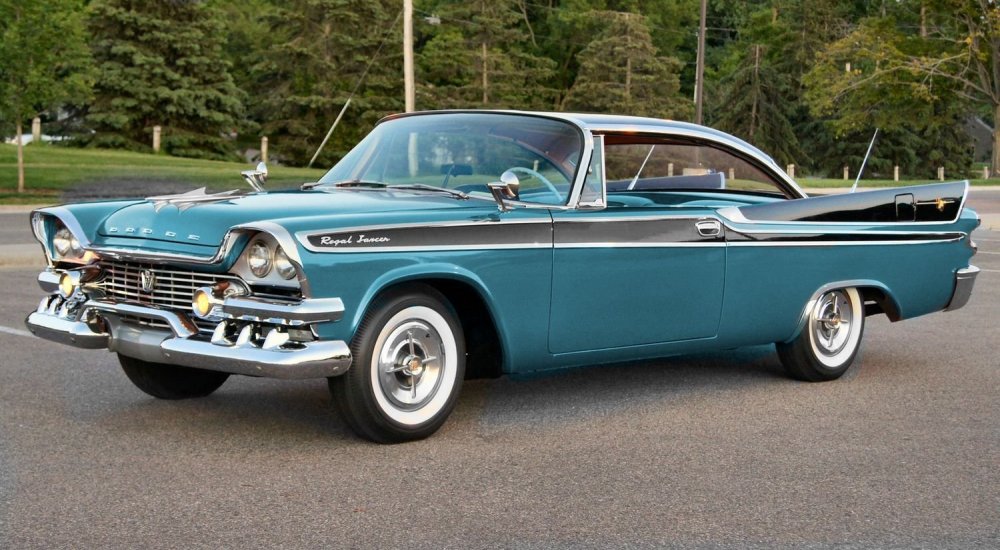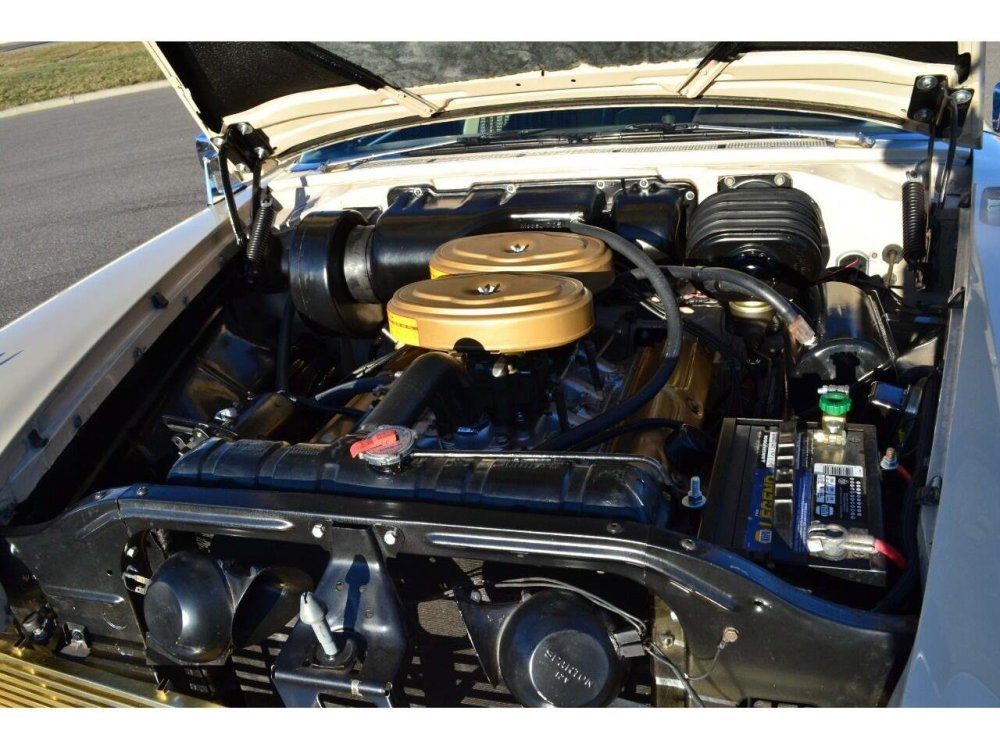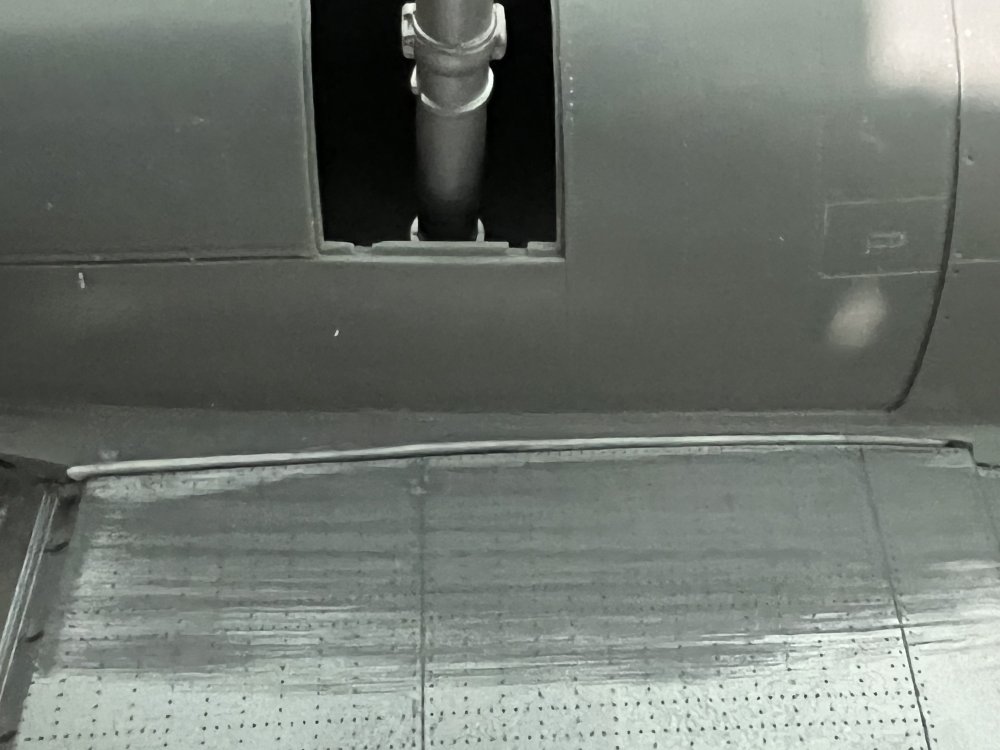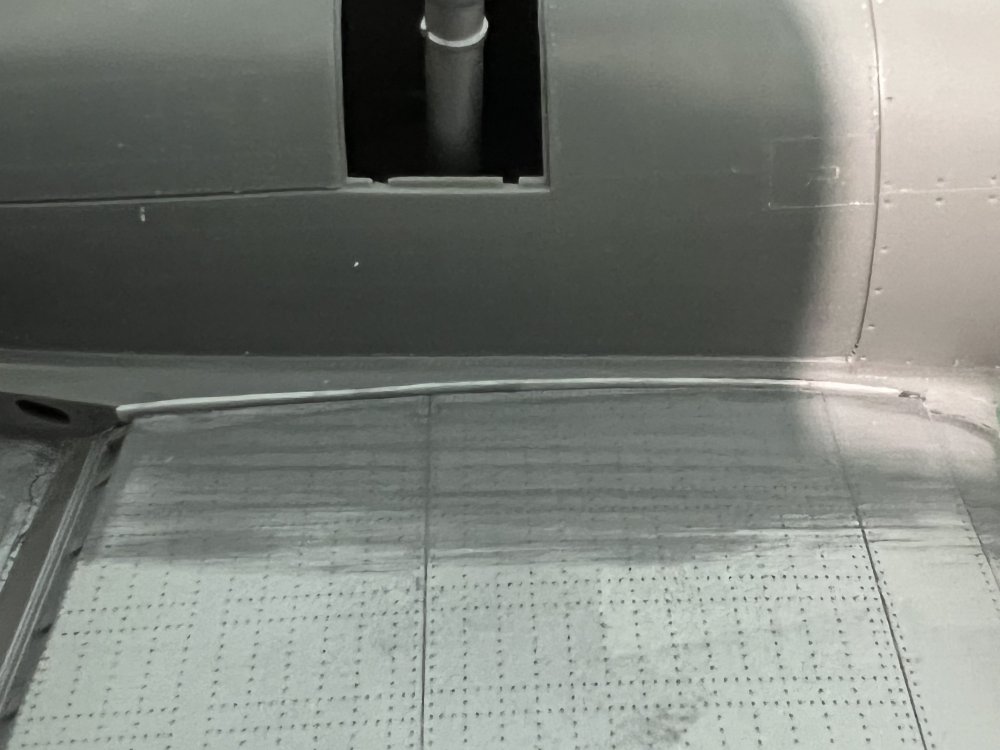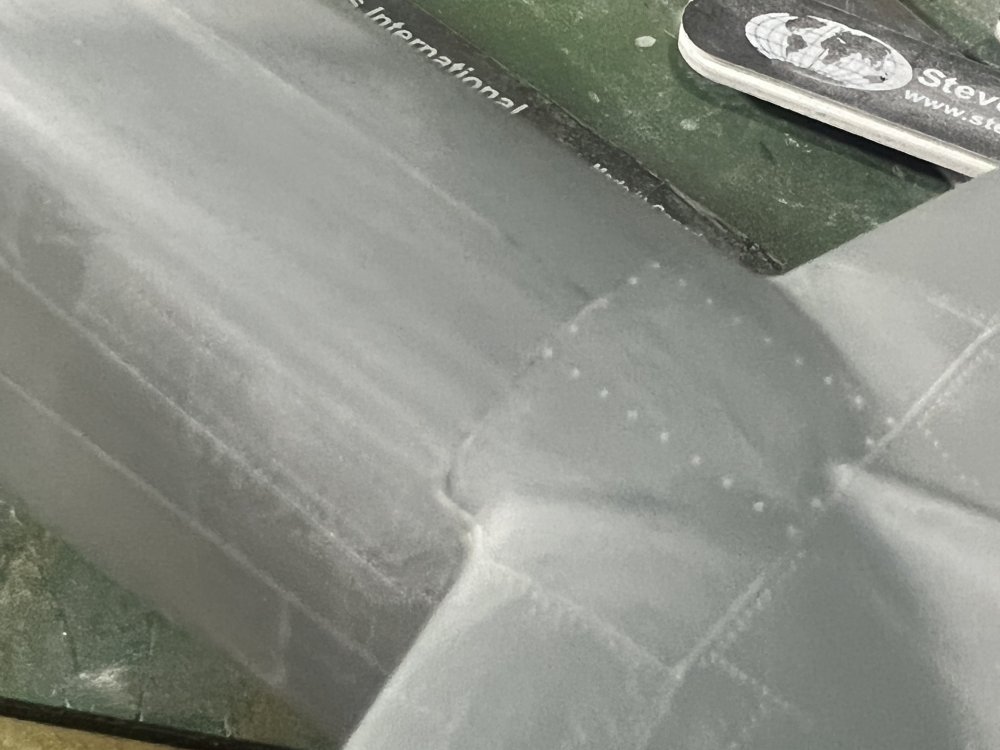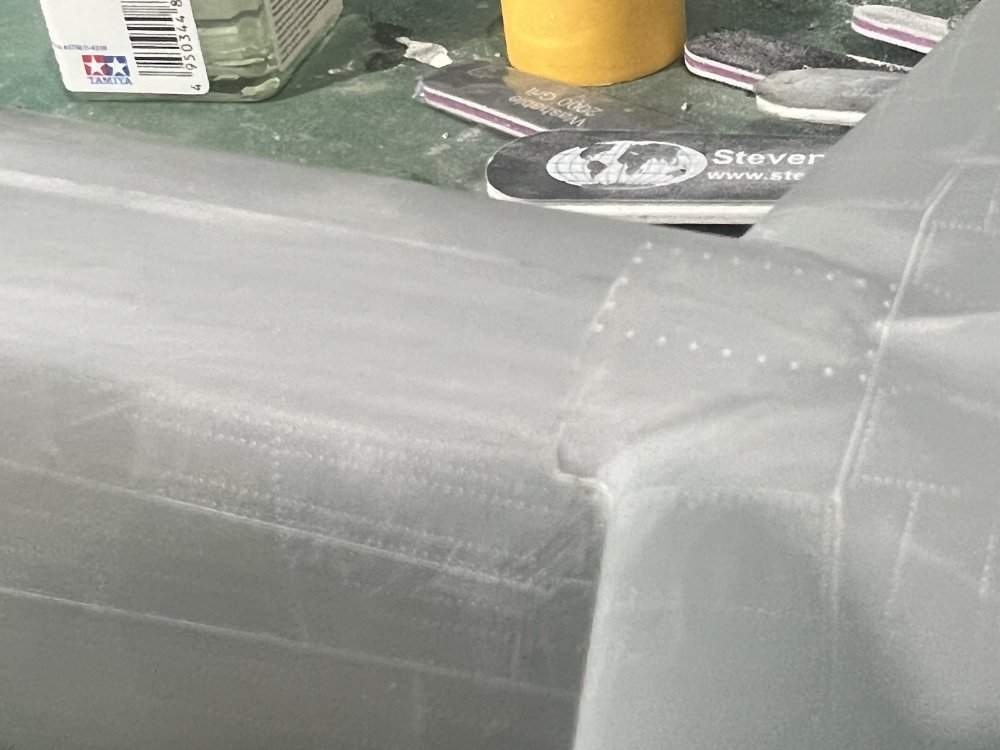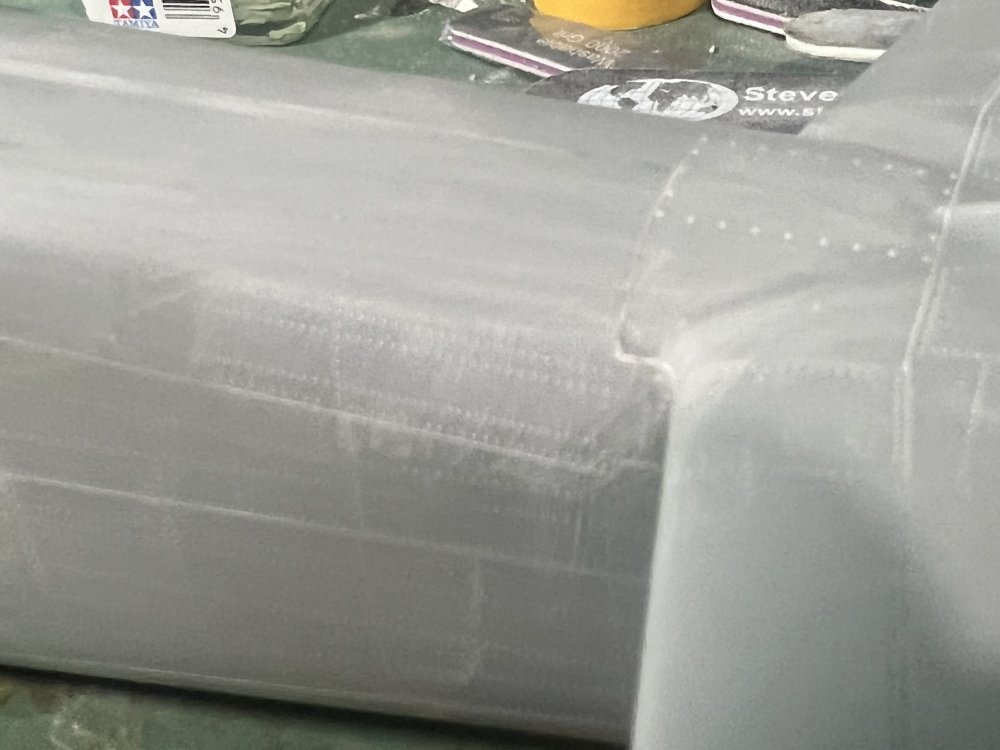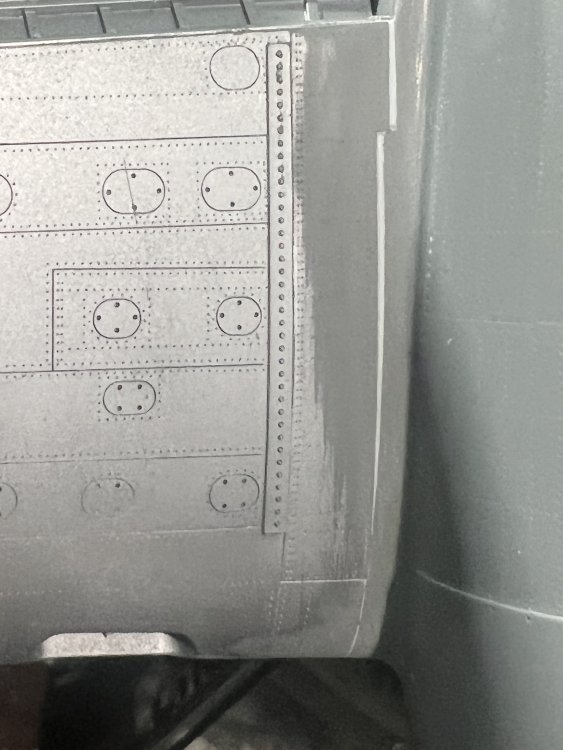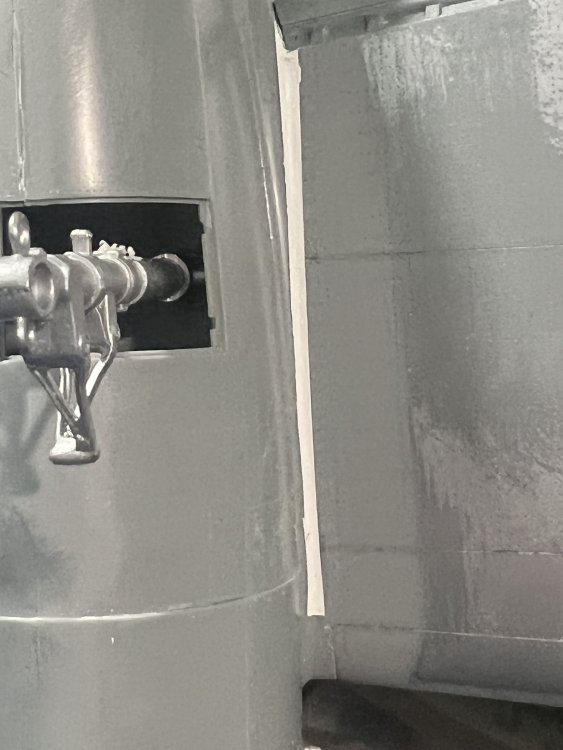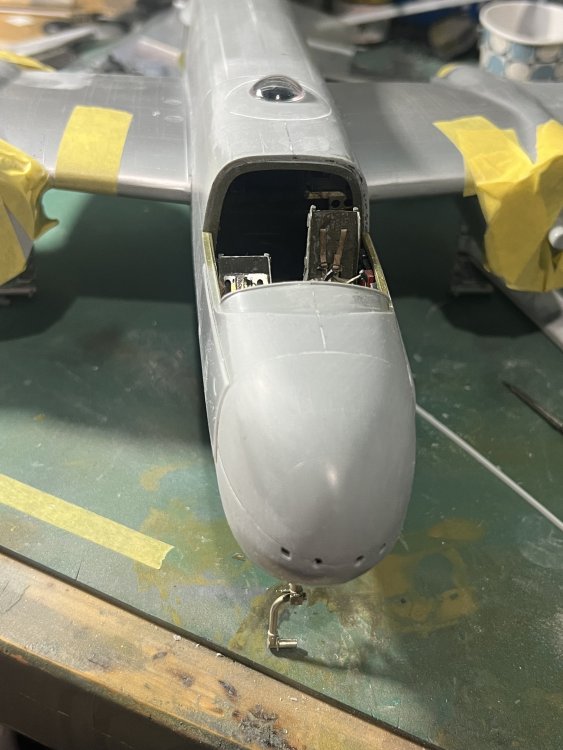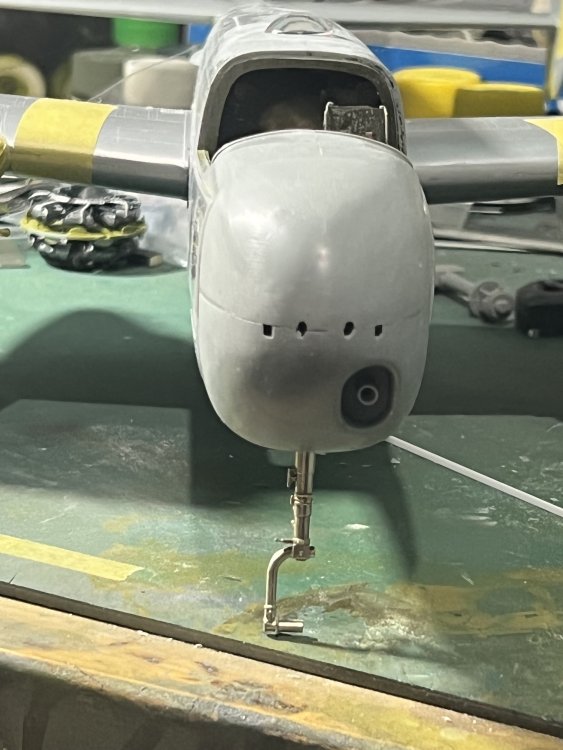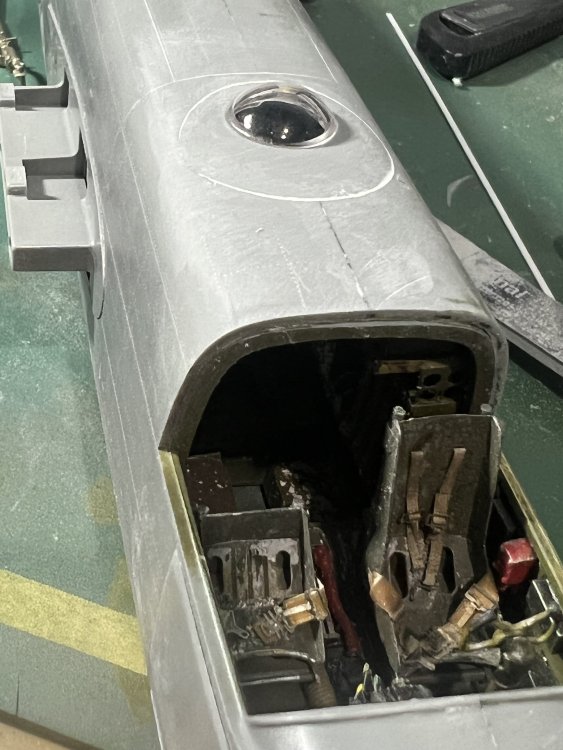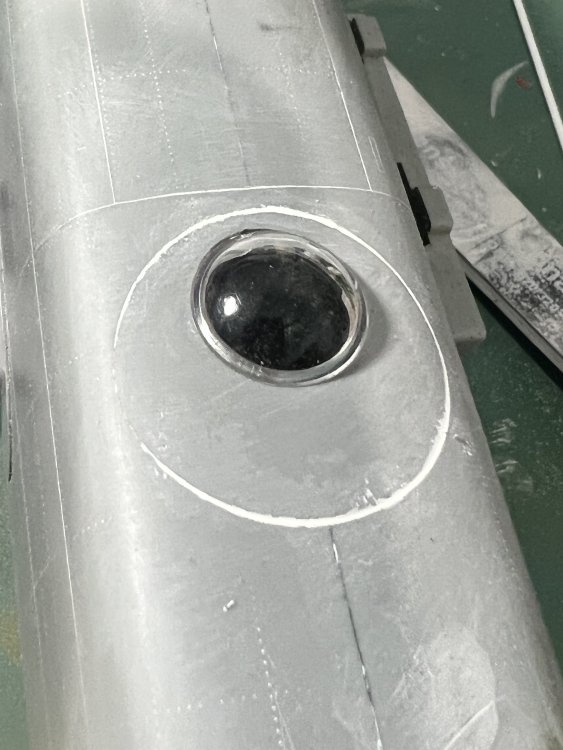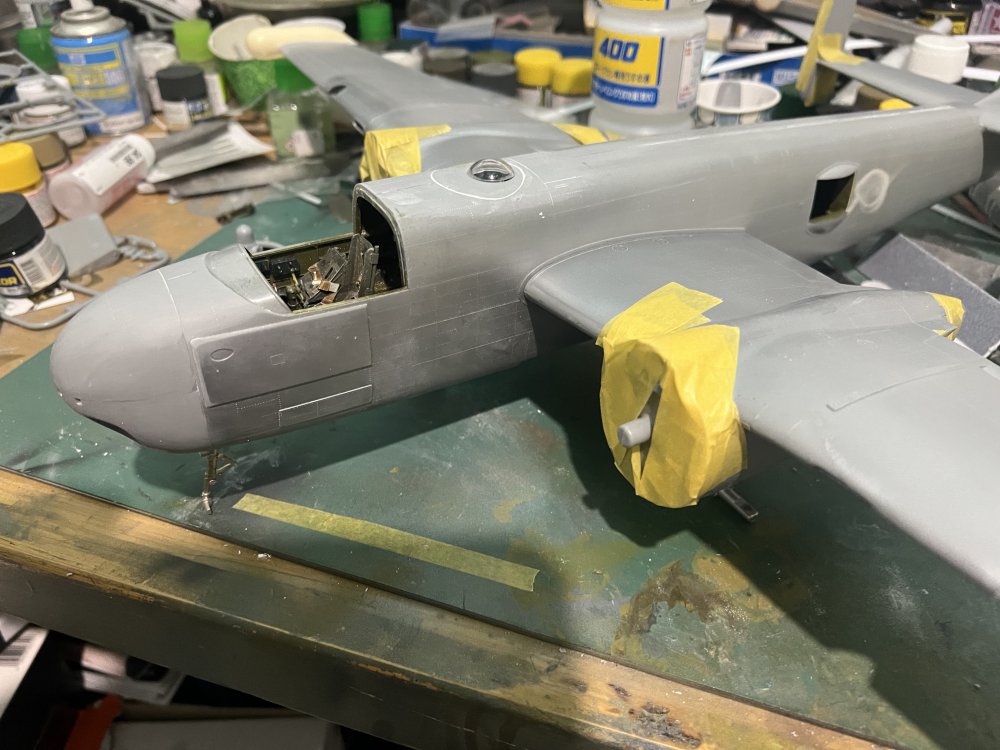-
Posts
7,199 -
Joined
-
Last visited
Content Type
Profiles
Forums
Events
Gallery
Everything posted by Clunkmeister
-
Not much has been happening here. Fuselage stars freshly painted, they need toning down. The nose has about 10 coats of slightly different shades I’m hoping a few very light passes with 15000 grit will give some interesting effects. I might be hoping for too much. Guys, I’m still really undecided on the hard edges. I believe they were hard edge demarcation lines, but field painting probably changed much of that, especially on the lower edges. Plus, the black backgrounds on the fins are much too stark. Tomorrow, out comes the RLM 66 Thoughts? Still at it, but car show season is upon us…..
-
Plenty of work to do, but we did a bit of weathering on the fuselage so far, then repainted the nose again as it was repainted multiple times during these aircraft’s lives. I applied the fuselage decals, and will mostly obliterate the aircraft name while destroying this paint. The rest of the fuselage will receive a bunch more weathering and a light grey wash to blend it all together. Im very unsure about the scale fidelity of the aircraft name. It almost appears too big. If so, we’ll change directions and GI with a full NMF nose as these got after the Squadron got fed up with repainting the noses every single day. I started laying paint on the wings today.
-
Good question, but from what I understand, anything and everything not necessary for long range over water flights was removed. So yes, I’d expect that the deice system would be removed. Side waist glass was removed, along with top turrets, package guns, etc. They felt the package guns were tough on the airframes, so they dumped them off. Every 6 or so pounds saved, was another gallon of fuel that could be loaded aboard, while still able to carry as many rounds and bombs as they had room to cram aboard. These B-25s took the war right to the enemy’s doorstep, and the firepower they unleashed was positively breathtaking.
-
I thought that too. Profi’s profile pics show soft edges as well, and I’m going to blend them A bit with some 15,000 grit and some careful blending. The Non Spec sea blue tends to chalk up, not necessarily fade, but the Intermediate blue fades a ton. Profi’s profiles show an almost primer grey very close to the early war blue-grey as seen on the earliest of Birdcage Corsairs. I know it’s wrong, but it can mislead. Lots of beat up metal, and plenty of coral dust damage on paint. I’ll be tearing up the front as soon as I get the shading and blending I want on the sides.
-
You too can experience this amazing scenery. It simply requires the purchase of a ticket with your friendly neighborhood British Airlines seller.
- 2,033 replies
-
- 6
-

-

-
- car related stuff
- anything about cars
-
(and 6 more)
Tagged with:
-
Same here. That Lancer is just COOL. Both cars share the same body shell and roofline, but the front and rear end treatment are totally different. The Super D500 with its Hemi is a real tire scorcher. You haven’t lived until you hear a Big Block Mopar inhaling through 8 battle carburetion. Hearing that dual quad “ring” is music to a gearhead’s ears. Twin striped of rubber for 300 ft, and then sit back, hang on, and shut up. Talk about one serious rapid transit system.
- 2,033 replies
-
- 3
-

-
- car related stuff
- anything about cars
-
(and 6 more)
Tagged with:
-
Well, it LOOKS like a 58…. The 58 has the quad headlights, they were still illegal in 57
- 2,033 replies
-
- 3
-

-
- car related stuff
- anything about cars
-
(and 6 more)
Tagged with:
-
I really want that Dodge. That Plymouth can be quickly sold, but she wants them together. I’ve owned a few 57-58 Plymouth Furies, and I’ll tell you this: they are GREAT road cars with a decent set od radials and disc brakes. They have that Chrysler torsion bar front suspension, and they are fast and corner better than any full size car from back then. Back then, you couldn’t GIVE these gas guzzlers away. Literally nobody wanted them, and time wasn’t friendly to them. The Dodge is the same underneath, but has the more crazy trim. And both cars only come up to my chin. They are low for a 50s car. What’s wild is if you park the Plymouth next to a 57 Chevy, suddenly that Chevy looks totally archaic. Plenty of misinformation out there about these. With torsion bars, built low, big block Chrysler V8s with dual quad carbs, there’s nothing to hate. Plus, paint the Dodge red, and in a few years, Joy could be just like the “Little old Lady from Pasadena”. 😂 Out on a Saturday night after baking cookies, and shutting down Mustang GTs, Vettes, Jags, and Ferraris with her Super Stock Dodge.
- 2,033 replies
-
- 3
-

-
- car related stuff
- anything about cars
-
(and 6 more)
Tagged with:
-
At it again with old piles of junk. Offered a 58 Dodge Regal Lancer and 58 Plymouth Fury today by a long time customer, and I’m sorely tempted. The price is really decent, and even though I haven’t seen it in public in years, I’ve spent many hours doing service work on it in the lady’s garage. Her husband and her bought two cars together in 1958: the 58 Regal Lancer, and a 58 Fury. The Regal has a special order Chrysler 354 hemisherical V8, what they call an “Super D-500”, and the Fury has a 350 big block wedge V8, what was called a “Golden Commando”. WTH with the goofy names. The 58 Ford retractable has a “Police Interceptor” V8, which is a bit more normal sounding, although the only thing it intercepts real well are speeding tickets. Both drink premium through 8 barrels of Carter WCFB, both have Torqueflite push button automatics, and both are rare as his teeth, almost showroom perfect but ugly as sin. To give you an idea, Ford sold 12 times as many hardtop coupes as Dodge, and 10 times as many as Plymouth. They weren’t popular new, and just looking at them shows why. They’re hideous to look at, and Joy immediately says she’ll never be seen in either one without a paper bag over her head. Because they’re in the lady’s garage, here are some stock pics. The Dodge is black with a white roof, and the Fury is identical to that one: eggshell white, gold anodized trim, and manure brown interior. Of the two, I much prefer the Dodge The Fury just seems messed up. Both run like scalded tail cats and each might get about 12 mpg at best when your foot’s on the floor. And if I want one, I gotta take ‘em both yikes My Fords’ll revolt!
- 2,033 replies
-
- 5
-

-
- car related stuff
- anything about cars
-
(and 6 more)
Tagged with:
-
The horizontal tail has similar gap issues, and there was a slight issue with the tail gunner’s hood. Again, a bit of evergreen fixes all. Nothing outrageous here, just some sanding and a wedge fill piece on the port side. The hood overhung the top edge on the port side by about 1/16”. No biggie,.. literally 5 minutes work, and it’ll be another hour to smooth, rescribe and polish. No big deal, and easily handled by everyone here. On other sites, some folks would lose their collective minds over this.
-
A teeny tiny bit of progress this weekend. So the biggest thing was to blank off the turret opening, and then Cyprus in a hole for an astrodome. The H didn’t have an astrodome, I expect the top turret was expected to serve as such. No astrodome was included in the kit, so I sourced a B-24 clear Sprue from eBay. Perfect!

